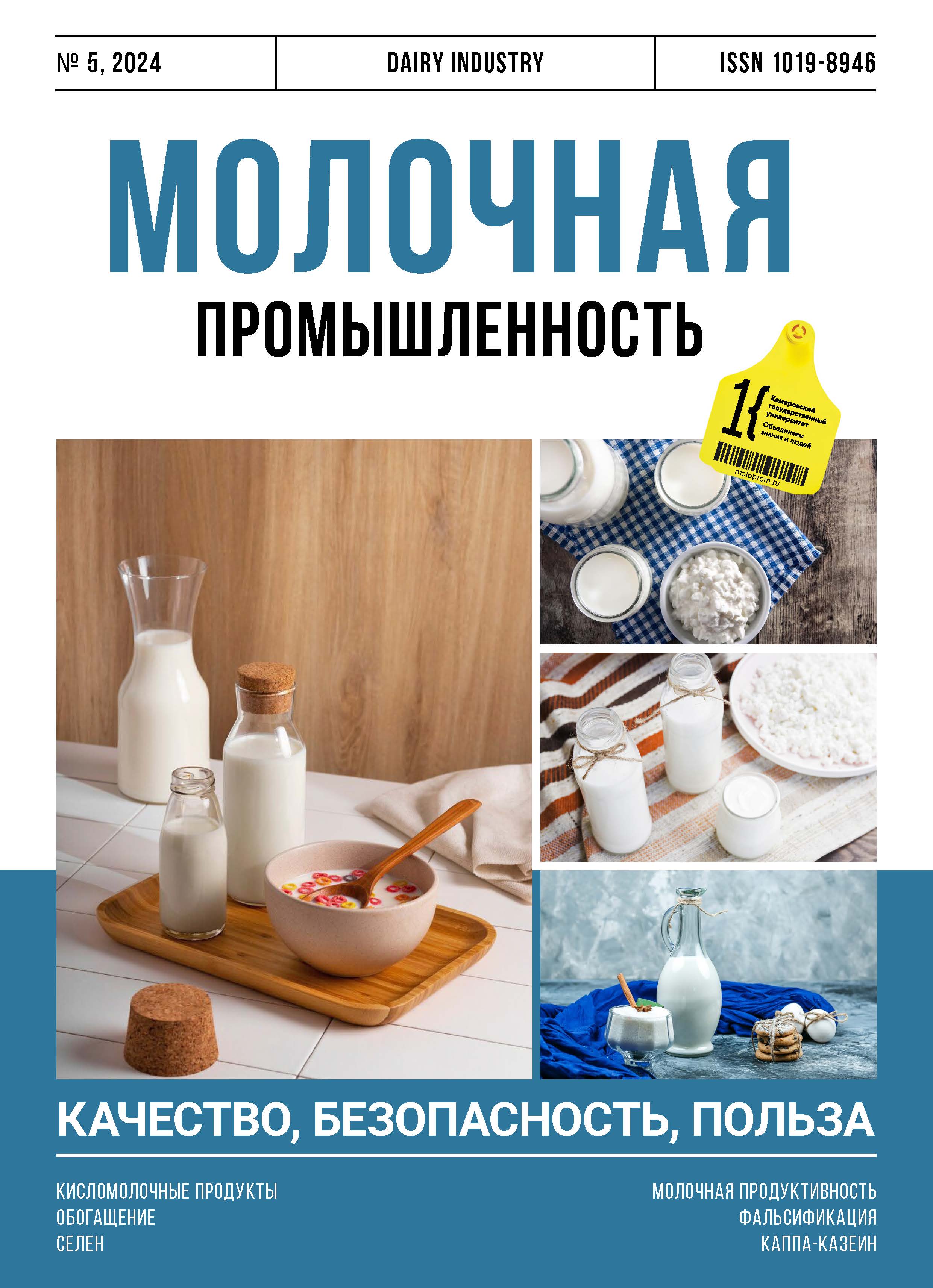Stavropol, Russian Federation
Stavropol, Russian Federation
Stavropol, Russian Federation
Stavropol, Russian Federation
Stavropol, Russian Federation
Stavropol, Russian Federation
The article introduces a new method of synthesizing selenium-based nanosystems stabilized by biologically active substances. Bovine serum albumin served as the stabilizer with selenic acid as the precursor and ascorbic acid as the reducing agent. The method of photon correlation spectroscopy demonstrated the average hydrodynamic radius of 40 nm. The physicochemical analysis revealed no significant effect on the titratable or active acidity of the medium. However, the additive improved the sensory profile of the final fermented product.
fermented dairy product, selenium, fortified food, micronutrient deficiency, titratable acidity, fermentation
1. Bubnova, N. V. Biologicheskaya rol' selena (obzor literatury) / N. V. Bubnova, N. Yu. Timofeeva, O. Yu. Kostrova, [i dr.] // Acta Medica Eurasica. 2023. №. 2. S. 114–123. https://doi.org/10.47026/2413-4864-2023-2-114-123; https://elibrary.ru/gpwvyw
2. Sayehmiri, K. The association between Selenium and Prostate Cancer: a Systematic Review and Meta–Analysis / K. Sayehmiri [et al.] // Asian Pacific journal of cancer prevention. 2018. Vol. 19. № 6. P. 1431–1437. https://doi.org/10.22034/apjcp.2018.19.6.1431
3. Kieliszek, M. Selenium as in important factor in various disease states – a review / M. Kieliszek, I. Bano // EXCLI Journal. 2022. Vol. 5. № 21. P. 948–966. https://doi.org/10.17179 %2Fexcli2022-5137
4. Okladnikova, E. V. Features of metabolism and spectrum of action of Selenium, possibilities of application of Selene-containing food supplements under SARSCoV-2 pandemic conditions / E. V. Okladnikova [et al.] // Questions of Biological, Medical and Pharmaceutical Chemistry. 2022. Vol. 25. №. 3. P. 23–33. https://doi.org/10.29296/25877313-2022-03-04
5. Yu, B. Positive surface charge enhances selective cellular uptake and anticancer efficacy of selenium nanoparticles. / B. Yu [et al.] // Inorganic chemistry. 2012. Vol. 51. № 16. P. 8956–8963. https://doi.org/10.1021/ic301050v
6. Zhang, J. S. Biological effects of a nano red elemental selenium. / J. S. Zhang [et al.] // Biofactors. 2001. Vol. 15. № 1. P. 27–38. https://doi.org/10.1002/ biof.5520150103
7. Blinov, A. V. Synthesis and characterization of selenium nanoparticles stabilized with cocamidopropyl betaine / A. V. Blinov [et al.] // Scientific Reports. 2022. Vol. 12. № 1. P. 21975. https://doi.org/10.1038/s41598-022-25884-x
8. Blinov, A. V. Investigation of the Effect of Dispersion Medium Parameters on the Aggregative Stability of Selenium Nanoparticles Stabilized with Catamine AB / A. V. Blinov [et al.] // Micromachines. 2023. Vol. 14. № 2. P. 433. https://doi.org/10.3390/mi14020433
9. Blinova, A. Synthesis, Characterization and Potential Antimicrobial Activity of Selenium Nanoparticles Stabilized with Cetyltrimethylammonium Chloride / A. A. Blinova [et al.] // Nanomaterials. 2023. Vol. 13. № 24. P. 3128. https://doi.org/10.3390/nano13243128
10. Garza-García, J. J. The role of selenium nanoparticles in agriculture and food technology / J. J. Garza-García [et al.] // Biological Trace Element Research. 2022. Vol. 200. P. 2528–2548. https://doi.org/10.1007/s12011-021-02847-3
11. Hramcov, A. G. Obogaschenie molochnyh produktov biologicheski aktivnymi formami selena / A. G. Hramcov, A. V. Serov, A. V. Blinov [i dr.] // Molochnaya promyshlennost'. 2023. № 6. S. 49–51. https://doi.org/10.21603/1019-8946-2023-6-13, https://www.elibrary.ru/lneulf






